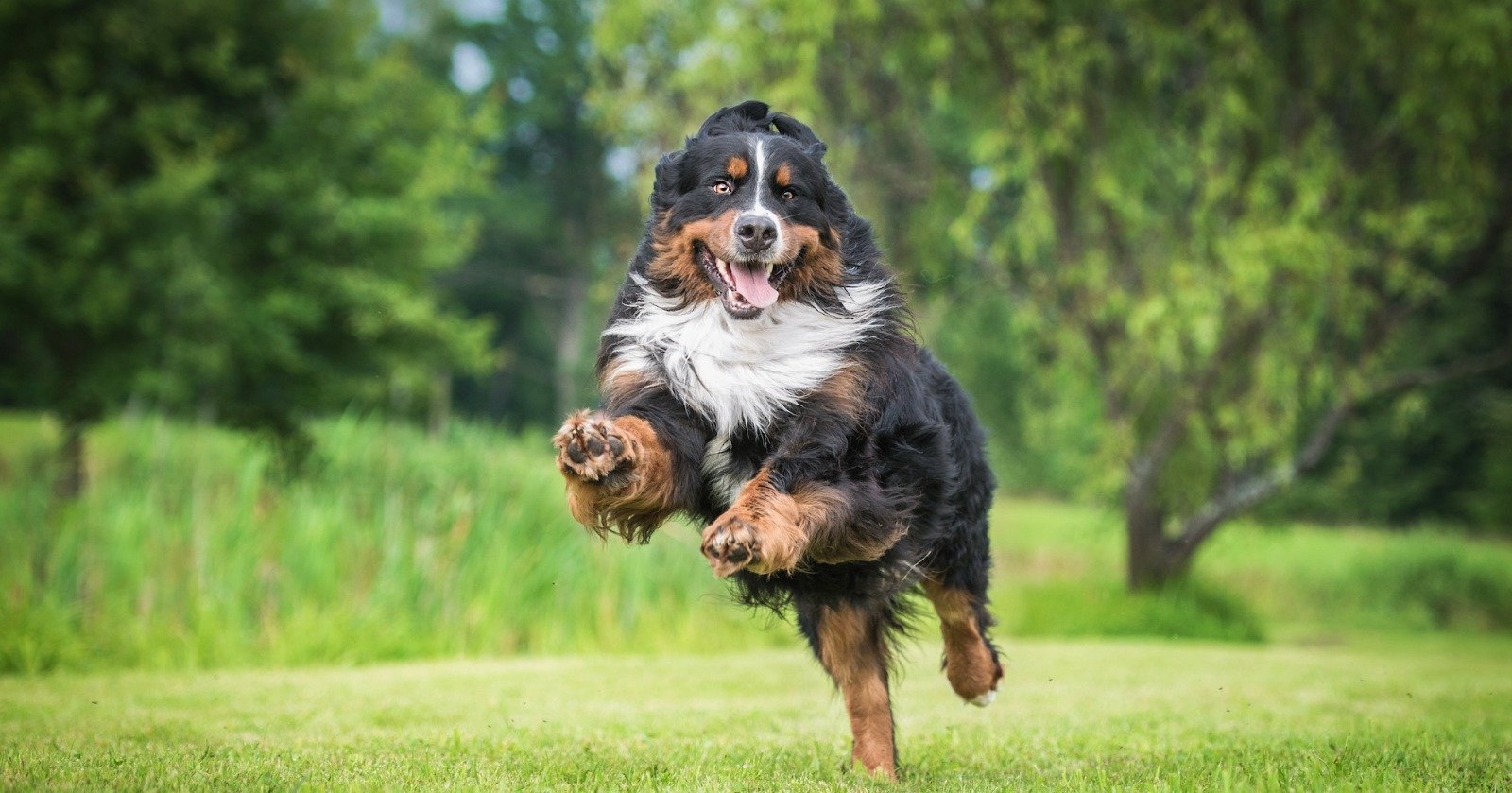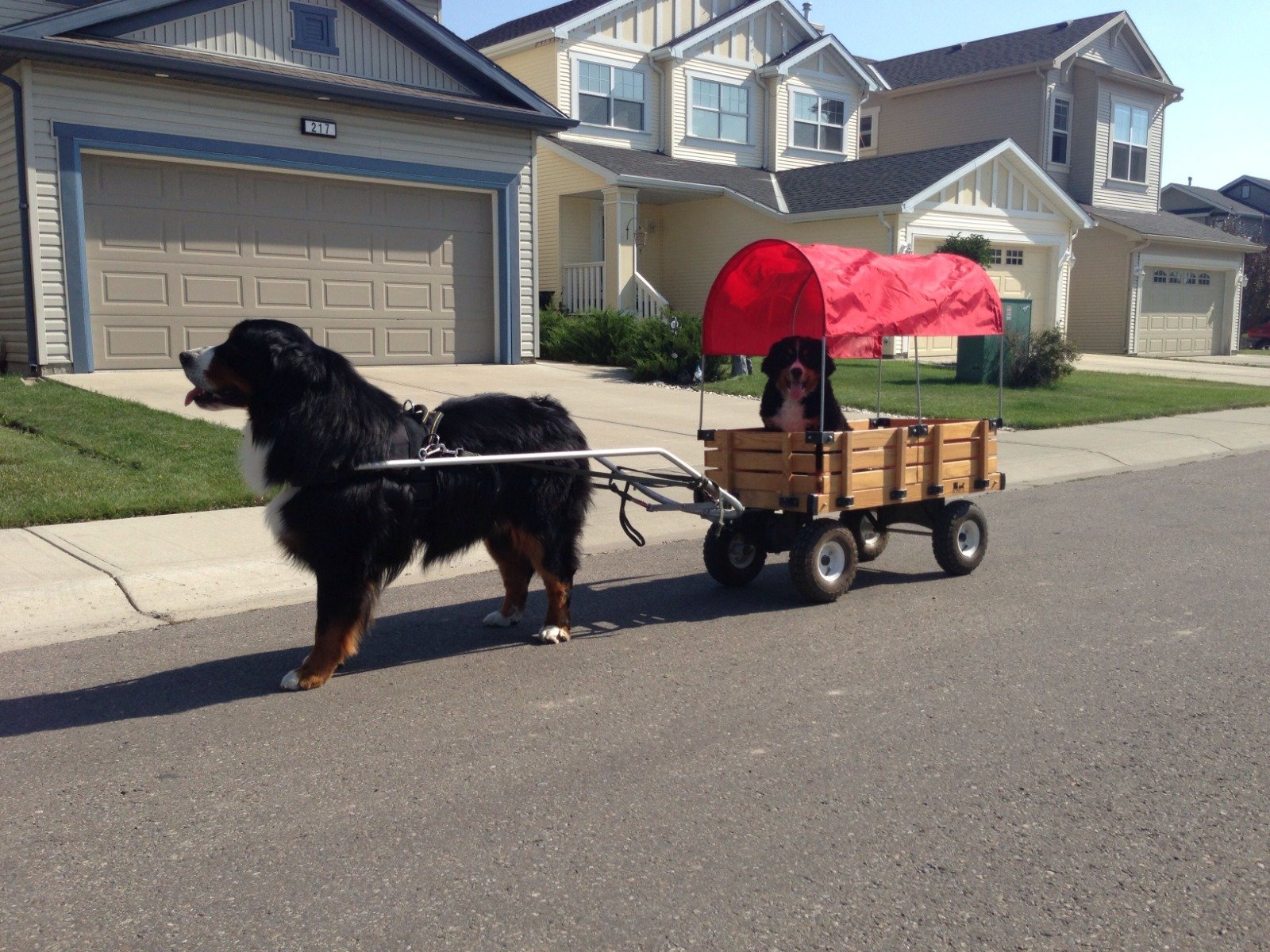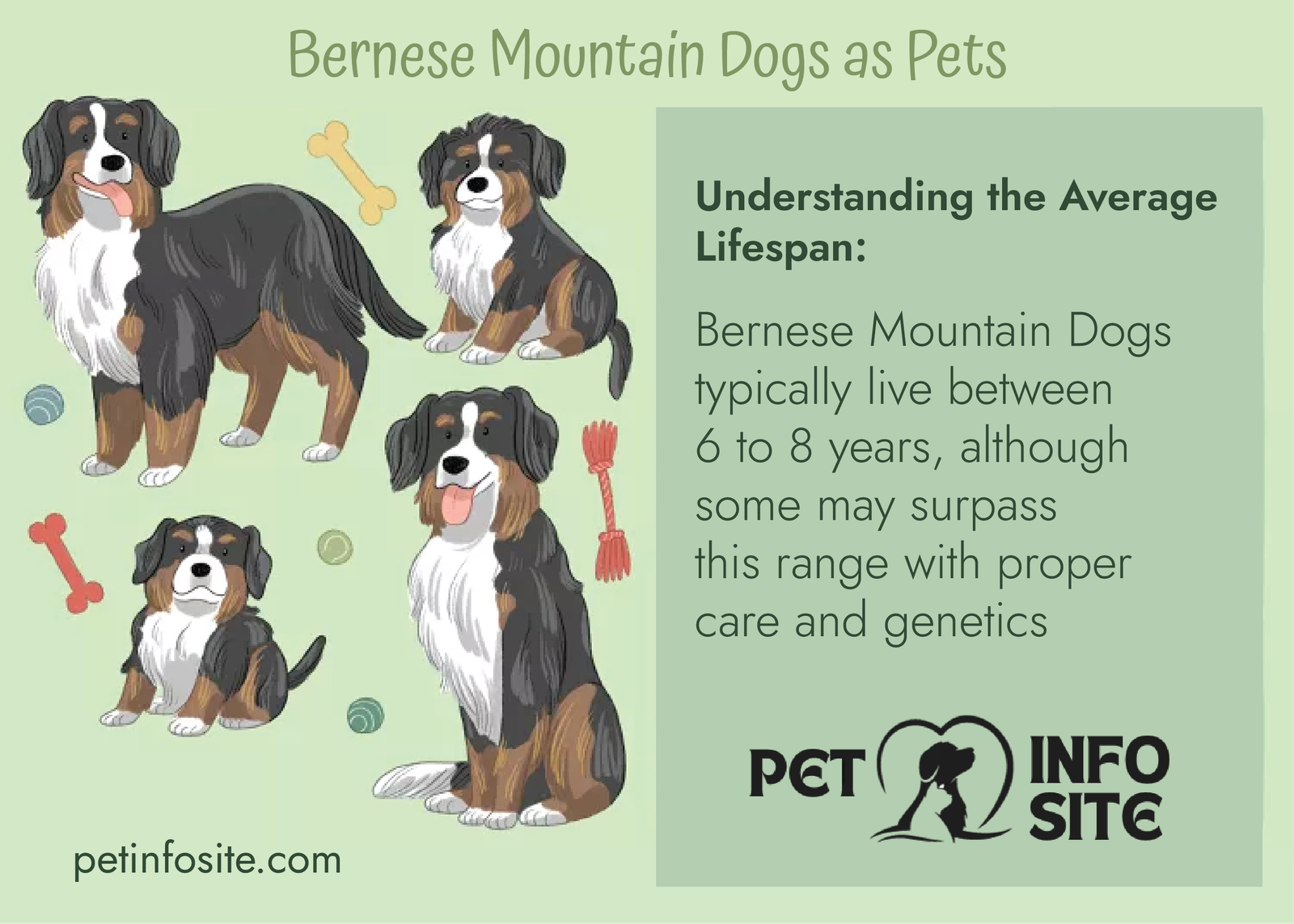Advice For Helping You And Your Puppies With Bernese Mountain Dog Shedding
Are you sick and weary of having to take care of up afterward your Bernese Mountain Dog Shedding all the time? This thorough article about Bernese Mountains Dog shedding will teach you how to control and reduce shedding.
Bernese mountain dogs are stunning and excellent friends for particular people. Let’s get started and spend a moment to admire our cute four-legged companion, the Bernese mountains dog when we talk about shedding.
Bernese mountain dogs, sometimes called BMDs or Berners, are small to medium-sized long-coated working dogs. A favorite of many pet parents, the Bernese mountains dog has a calm, good-natured personality and medium energy level.
A relatively active family where everybody typically stays at home seems to have happier dogs. If they spend most of their time alone in the house, they don’t perform as well.
Of course, Bernese Mountains Dogs shed. You may have come here to find out the quantity of shedding that should be expected before adopting one, or you may already have one and are having trouble figuring out why they could be shedding higher than usual.
We address all of your urgent inquiries about Berner shedding in this article. You’ll learn what you should expect from your new pet and when they might shed more throughout the year. Additionally, we’ll offer some advice on how to minimize furry visitors to your house. Now let’s get started.
All About The Season for Bernese Mountain Dog Shedding
The thick protective coat of the Berner is well known. They need this to help control their internal temperature, so it’s crucial, but it also causes some pretty significant shedding afterward. There will be fur patches nearly everywhere, especially at the beginning of the year and fall.

Twice a year, your Bernese are going to blow away their undercoat, generating mounds of hair that are loose in its wake. Usually, this continues for four to six weeks. Take a look at some of the advice we’ve provided below to help make shedding easier to handle.
Living with a Bernese Mountains Dog entails occasional sheds. Although regular brushing, washing, and sweeping won’t stop it, following these suggestions will help you and your dog deal with the fluffy tumbling plants during the coat-shedding season. Both of you will be happy if you keep on top of it.
Bernese Mountain Dog Shedding a Great Deal of Fur: Why Does It Matter?
There are several reasons why Berners lose a lot of fur. First of all, the breed was developed in the Swiss Alps, therefore its coat is meant to keep them warm there. While the more lengthy outer coat shields against precipitation and the elements, the dense underneath coat acts as warming.
- To adjust to the warmer temperatures, Berners lose their undercoat throughout the spring and summer. The term “blowing coat” refers to this seasonal shedding that causes strands of loose fur to appear continuously. The seasonal shed cannot be avoided, but brushing it regularly can help reduce the mess.
- Berners constantly shed, even though at a reduced rate, as their hair falls off and fresh development appears. Regular brushing, washing, and maintenance will preserve your Berner’s coat without tangles and minimize excessive shedding.
- Genetic factors and nutrition also come into play. Reducing shedding and promoting a healthy coat are two benefits of premium dog food that contains vital fatty acids. Inheritance could be something else causing the animal to shed excessively. It’s wise to have your vet rule out any deeper medical concerns if your Berner appears to shed significantly.
Possessing a Bernese implies you must provide into operation sheds, even though they can be troublesome. You’ll make the most of lint rolling elements, vacuuming, and routine grooming. The positive aspect is that you’ll be able to better maintain the fur with patience and regularity. Of all, what makes it worth every penny is your gentle giant’s everlasting love.
How To Lower A Berner’s Shedding
While many dog brushing types perform a respectable job of cleaning the outer layer of the dog’s fur, you will need to acquire the correct supplies to reduce shedding in this breed. Double-coated breeds require special care; otherwise, by the end of summer, the coach and blankets will start to resemble dogs.
They are precisely what they sound like, in case you’re not familiar with them. It is similar to a human brush, except instead of having plastic endings at the end, it has blunt edges or pins. One can be purchased for as low as five dollars or six dollars.
Additionally, a pin toothbrush and smoother combo may be purchased online or at large pet shop stores for thirteen dollars or fourteen dollars. Even “self-cleaning” smoother toothbrushes exist. To remove the hair, pull back on the hooks.
While some slicker toothbrushes have fixed pins, they nonetheless function wonderfully. A brush that can penetrate your Bernese Mountains dog’s undercoat is essential, no matter what kind you choose. If not, you will only receive half of the hairs.
Taking a bath is essential. Don’t economize on cleaning supplies and treat your dog with high-quality shampoos. Weekly bathing is also essential, particularly for Berner breeds where it helps regulate dirt and other debris that develops into their coats. To put it another way, picture it as a piece of fabric that collects everything your dog rolls into. Get the idea?
A Bernese Mountains dog’s long hair and tricolor coat are stunning, but they require frequent brushing. If Bernese mountain dogs are properly groomed, shedding shouldn’t be a big problem.
Brushing thoroughly and regularly is also crucial. The majority of Bernese Mountains dogs appreciate being brushed, so you ought to experience success with this practice.
Which Season Is Best For Bernese Mountain Dog Shedding?
Bernese mountain dogs shed heavily in the spring and fall, about twice a year. We advise brushing and cleaning your Berner every day during those times of the year if you’re hoping to reduce the quantity of hair that gets on your clothing and furniture.
They are going to shed some hair throughout the remainder of the year, just not as frequently as they do during their annual high-shedding seasons. You should prepare ahead of time; get quality grooming supplies, such as a nice brush, and think about stocking up on additional dog food the night before certain times of the year arrive.
The Reasons Behind Brushing and Grooming Your Dog’s Coat
Maintaining your appearance regularly is essential
To maintain a clean and tangle-free coat on your Bernese Mountain Dog, you must be dedicated to regular grooming. Particularly behind the ears, around the underarms, and the tail, their lengthy thick coats are prone to clumping and connecting.
Make time every week to give your Bernese a grooming brush and comb. Begin adjusting them to routine grooming from the very beginning.
Often brush
Try to brush your pet between three and four times during the week, particularly during blow-outs. For the dispersion of fluids and release of dead hair, use an undercoat raking and smoother brush.
Areas that are subjected to mats require additional caution. Regular brushing even for ten to fifteen minutes at a time will help control shedding and maintain the health of their coats.
Think about expert grooming services
For certain individuals, investing in professional dog grooming on a couple of occasions a year is worthwhile. To get rid of extra dead hair and any mats you might have overlooked, a professional groomer can give your Bernese a full brushing, bath, and trimming.
They have the tools, know-how, and training necessary to handle a Bernese dog’s heavy coats. Request a suggestion for a groomer who has worked with Bernese Mountains Dogs from your veterinarian or breeder.
For your Bernese Mountains Dog to stay healthy and comfortable, regular combing and maintenance are necessary. Grooming your dog’s coat neat and free of clumping will minimize shedding in your house and keep your dog content and tangle-free, but it does take a significant time investment.
With perseverance and reliability, grooming can turn into a fun way for you two to spend quality time together.
Instruments
Any type of dog toothbrush should be sufficient for surface cleaning; nevertheless, you will need to have the proper equipment for reducing shedding in Bernese Mountains Dogs. Double-coated breeds require special care, or you may be in danger of an unexpected awakening. If you ignore them too much, by the summertime your furniture and carpeting can look like dogs.
It’s crucial to use the proper grooming products to keep your long-haired dog’s hair comparatively free of split ends so that you may prevent having fur-covered furnishings in your house. Therefore, the finest tools to use to style your Berner’s thick mane are:
- A pin brush made of stainless steel
- A smoother brush
- Comb made of stainless steel with sharp and smooth teeth.
Techniques & Guidelines for Bernese Mountain Dog Shedding
You’ve determined that the Berner is the ideal species for you, but perhaps you could use some guidance on better controlling their shedding tendencies. All heavily shedding breeds require a successful do-it-yourself grooming program.
Take into consideration getting a Bernedoodle, which combines a Berner and a Poodle, if you are unable to bathe your pet once a month and brush them every day during shedding month. These puppies are noted for shedding less than their Bernese parents and frequently have the same pigmentation.
There are several actions you will need to do if you are prepared to address your Berner’s shedding behaviors. Unless there’s a medical condition, we do not believe a breed’s maintenance ought to constitute a cause for avoiding it.
If your primary concern about bringing a dog within your living space is that they have fur, do not avoid this variety many dog breeds do extremely well with particular relationships in families. How simple is it to control the Berner’s propensity of shedding? A reduced furry environment will be yours if you heed these recommendations for Bernese Mountains Dog shedding.
Supplemental documents
Supplements remain a possibility if a food adjustment hasn’t had the desired effect on your dog. Generally, all you need for healthy skin and coats is a good omega-3 fatty acids fatty acid supplement.
For the convenience of usage, we suggest using the chewing skin and coating health vitamins made by many companies. For added taste and nutritional value, you may also try dousing your dog’s dry food with a few spritzes of water-based Omega fatty acids.
Taking a bath
Bathing your Berner should only happen once every month. Now and then, after playing in the water, greenery, or departs your dog could need a bath. If it’s not a regular event, doing it at most every other month won’t be harmful to the condition of their coat. Grooming your dog more frequently than once every month might cause cracked or dry skin and a loss of oil from their bodies that is essential for the health of their coats. The lengthy, thick coat of a Berner makes them prone to odor development. Taking regular baths will help them maintain their fresh scent.
Conditioning Shampoo
Generally speaking, except if you are washing frequently and are not seeing the desired results, we do not advise using an Anti-hed solution. Harmful chemicals are present in certain Anti-Shed formulations. Some people don’t. Only if you notice less fur surrounding your house following a very strict brushing schedule do we advise taking this course of action. To maintain the health of your Berner’s coat, regularly bathe him with homemade or breakfast dog shampoo.
Nutrition
When it concerns the health of their coats, most dog owners disregard diet. However, as a pet parent, one of the “smaller dropping fruits” you may pursue is nutrition. It makes it easier for your dog’s coat nutritious and glossy if you make sure the diet they eat is high in Omega Fatty Acids. The benefits of high-quality dog treats on the general well-being of your dog’s coat may not become apparent for a maximum of thirty days. For optimal coat health, we suggest considering grain-free meals, such as Flavour of the Wild’s superior products.
Frequently Sweeping and Cleaning
Regular cleaning and sweeping are essential for controlling shedding in Bernese Mountains Dogs. Even though you adore your pet, nobody wants hair from their dog all over their house. You can control hair loss and keep your space neat by developing a quick housekeeping routine.
Frequently Cleaning
Try cleaning two to three times during the week, particularly in places like the bedrooms or living rooms where your Bernese spend a lot of time and where they are busy with people. To remove hair from furnishings, carpets, hardwood floors, and confined areas, use a cleaning tool with a powerful vacuum and an attached hose or brushing attachment.
Move slowly across the whole carpet area to remove any embedded hair from the strands. Regular vacuuming will keep loose hair from collecting and smearing onto the fibers of the carpet.
A Swiffer and Fine particles
Clean and Swiffer hard surfaces, such as floorboards, window frames, cases, and hardwood or ceramic tile flooring, in addition to cleaning, at least every seven days. Bernese hair has a propensity to adhere to things and float.
To collect hair and tidy up surfaces as you move use a Swiffer Duster, brushing wand, or microfiber sweeper. If hair gets stuck to surfaces, you need to use a little moist cloth or multi-surface cleanser to break the glue before removing it.
Another excellent dog tip is to keep a lint remover on hand due to its portability and compact size. When you pick up your dog, you won’t have any concerns about getting stray hairs on your adorable dog’s clothing,
Organized mattress and surroundings
The furniture your Bernese loves, like the couches, bedtime, and doggie bed, will also need to be cleaned frequently. When cleaning or lint-rolling objects of furniture, try to do so two or three times during the week to remove hair before it becomes embedded in the fabric.
To get rid of smells and shedding hair, give your Bernese’s bedding every week soaking in soapy water that is hot. Wash your bedding sheets, pillows, and bedspreads every one to two weeks to reduce hair transmission and maintain an attractive bed.
Additional Causes of Shedding
If you increasingly have a Berner, there might be additional causes for their higher-than-average shedding. Several additional factors can affect how frequently their fur sheds other than the “shedding season.” The following are some things to watch out for if dog Bernese is shedding larger amounts than usual.
Managing Stress and Anxiety
The Bernese species is essentially more nervous. They can experience anxiety during separation, and one of the many typical signs of a nervous or overwhelmed dog is shedding. Any disruption to their regularity, such as adding a new puppy or baby to the family or not spending a sufficient quantity of time with them, might make them anxious.
Modification of Diet
Dietary modifications may affect how frequently your Bernese sheds. It could be necessary for certain dogs to switch to a food brand with fewer ingredients. Grain infections are common in this breed, so if you see more shedding than usual, you might want to look into a grain-free composition.
Skin Disorders
Your dog may shed greater amounts than usual due to skin disorders brought on by fleas and other mites in particular and other pests. It’s also conceivable that a new food or treatment your dog has been given has caused skin reactions in them.
Medical Problems
Serious health issues are less widespread, although they can still result in further fur removal. See your veterinarian if your animal has undergone a shift in its conduct in addition to having extra fur around the house.
Conclusion
In conclusion, preserving an advantageous connection with these amazing friends requires a comprehension of and method for handling Bernese Mountains Dog shedding. Bernese mountain dogs have shedding issues despite their gorgeous look and endearing personality, especially during their respective fall and spring shedding phases. The harmless process of shedding is influenced by a variety of elements, including family history, adaptability to the environment, and general health.
This article has given you useful knowledge on Bernese mountain dog shedding habits and useful tips for reducing the damage to your house. It emphasizes that regular grooming including washing and brushing is crucial for controlling shedding. For double-coated dogs like Berners, special grooming instruments like pin brushing and combining tools are advised.
The article also discusses possible causes of excessive hair removal that go beyond regular seasonal melodies. The exploration of several factors, including stress, changes to diet, skin conditions, and underlying medical problems, encourages pet owners to keep an eye out for any unexpected signals in their Bernese mountains dogs and seek veterinarian assistance when necessary.
FAQs
How do Bernese mountain dog breeds shed frequently?
In spring and fall, when they shed most heavily, Bernese Mountain Dogs usually have two shedding seasons annually. This shedding is a normal part of the body’s response to changing temperatures.
Would Bernese mountain dog breeds shed more during a particular time of year?
Yes, the spring and fall seasons are when Bernese mountain dog breeds shed the most. It is best to enhance the amount of time brushing during the warmer months and take additional precautions to control shedding.
To reduce shedding, how regularly should my Bernese Mountain Dog Shedding be groomed?
It advises to practice regular getting ready, which includes bathing and shampooing. Daily brushing requires proper control of loose fur throughout shedding seasons.
How can I keep my house from shedding?
Occasional cleaning and brushing schedules can help keep loose fur in your house under management, particularly during shedding seasons. Completely reducing the detrimental effects of shedding on floorboards and furniture can be achieved by using Swiffer tools and handheld vacuums on different surfaces.







